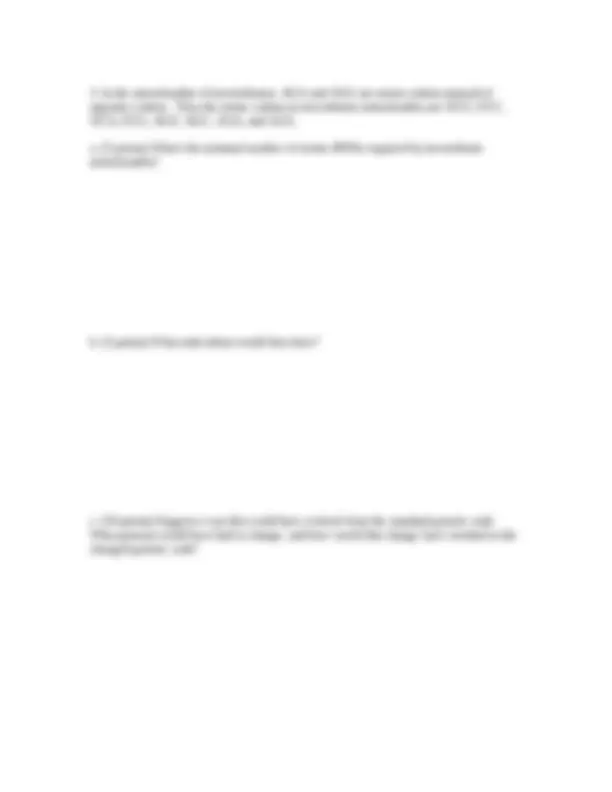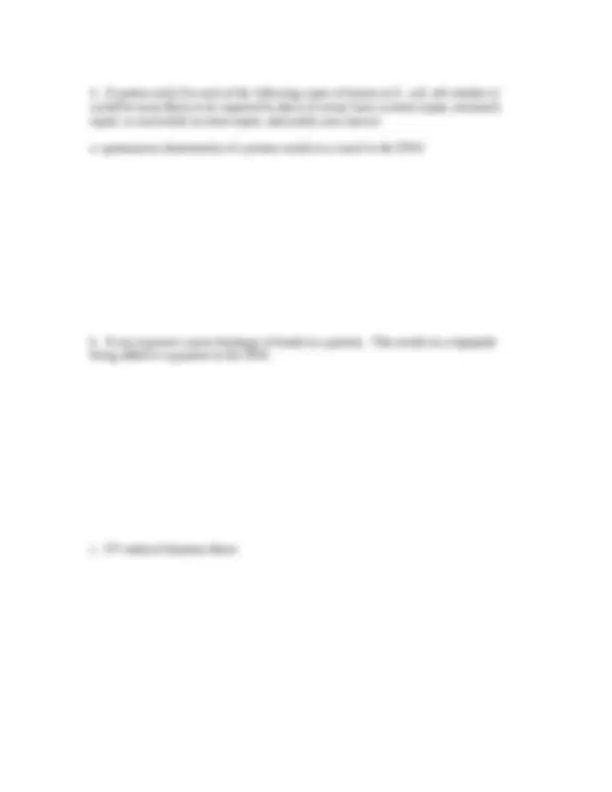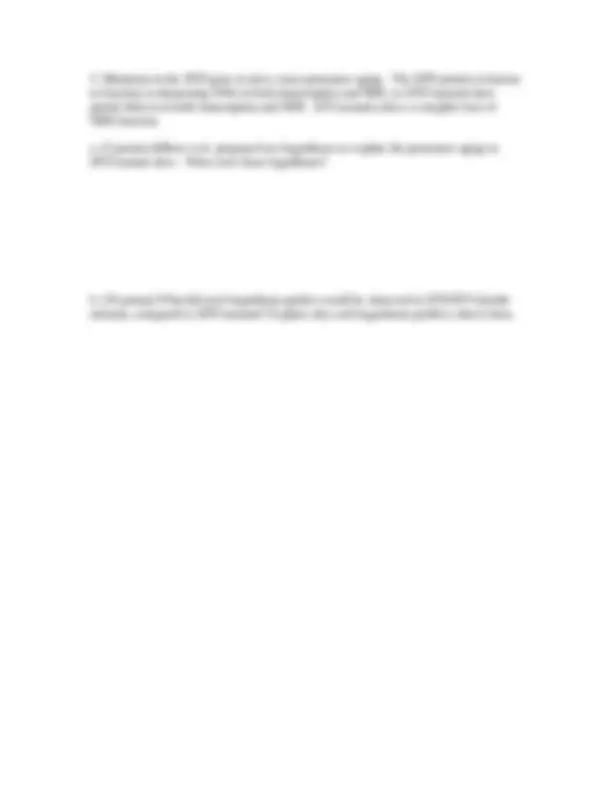





Study with the several resources on Docsity

Earn points by helping other students or get them with a premium plan


Prepare for your exams
Study with the several resources on Docsity

Earn points to download
Earn points by helping other students or get them with a premium plan
Community
Ask the community for help and clear up your study doubts
Discover the best universities in your country according to Docsity users
Free resources
Download our free guides on studying techniques, anxiety management strategies, and thesis advice from Docsity tutors
Material Type: Exam; Professor: Gathman; Class: Molecular Genetics; Subject: Biology; University: Southeast Missouri State University; Term: Spring 2006;
Typology: Exams
1 / 6

This page cannot be seen from the preview
Don't miss anything!




BI 381 Exam 2 Spring 2006 Instructions: 1. Relax. 2. Genetic code and wobble tables at the end of the exam. a. (20 points) In the table below, indicate whether each mutant organism will be able to grow when placed on each medium by putting + for growth of the organism and - for no growth of the organism. Please make them clear so I can read them. Note: Compound B is hydrolyzed to yield D and E; compounds C and D are combined by condensation to form F; compound G and some compound included in minimal medium are combined by condensation to form H. The organism must either make or receive compound J in order to grow. All mutants are auxotrophs, and each is mutant for only one gene (coding for one enzyme). Minimal Medium Supplemented with Compound Mutant (none) A B C D E F G H I J 1 2 3 4 5 6 7 8 9